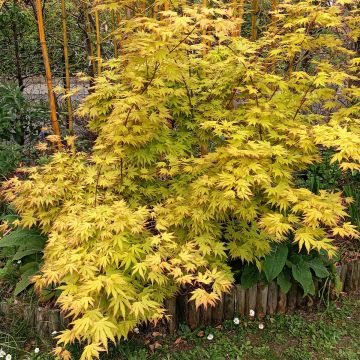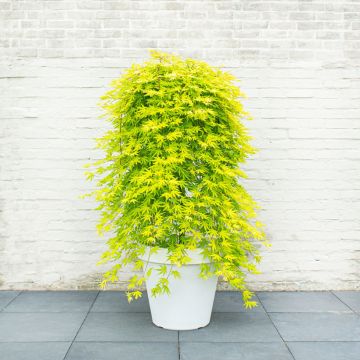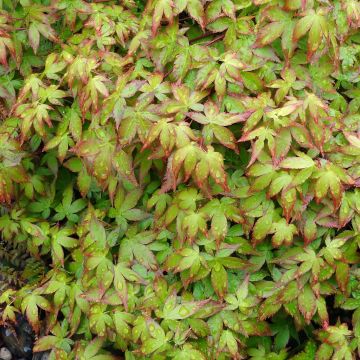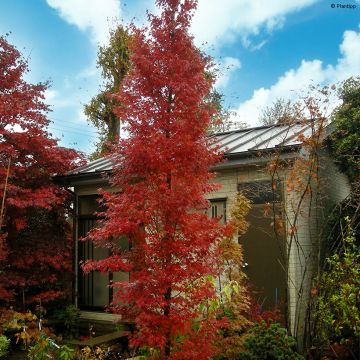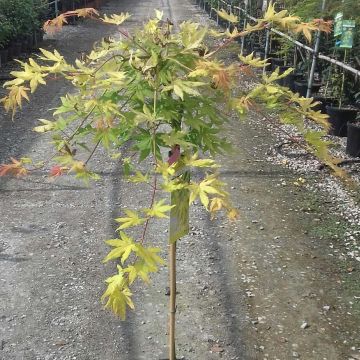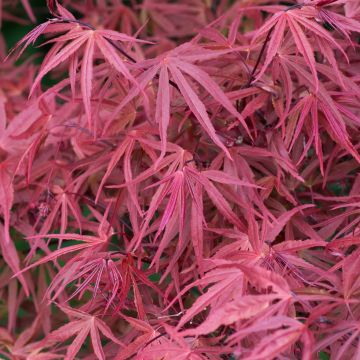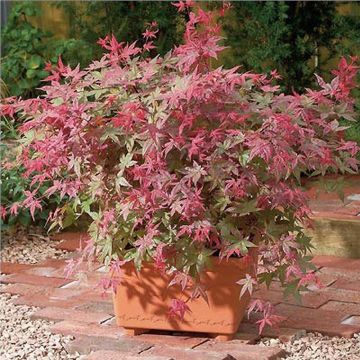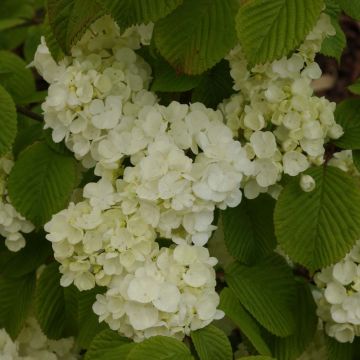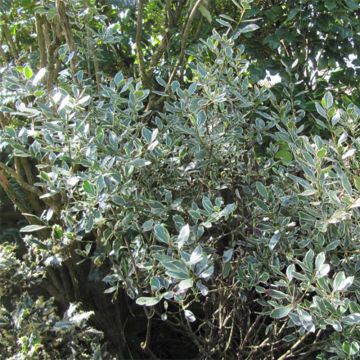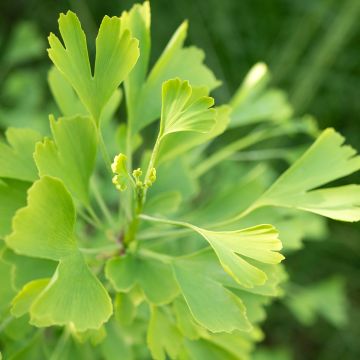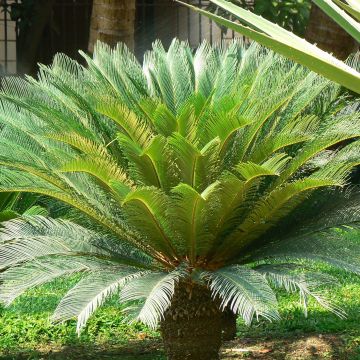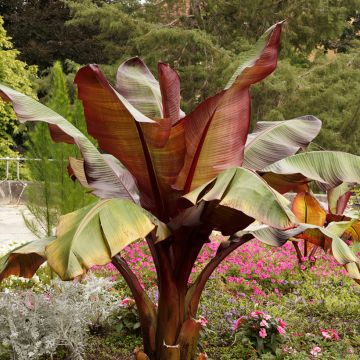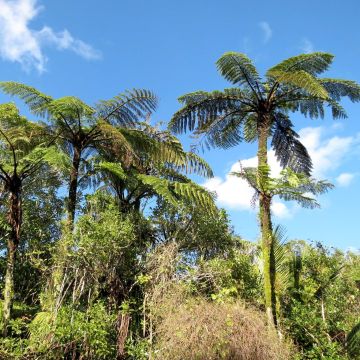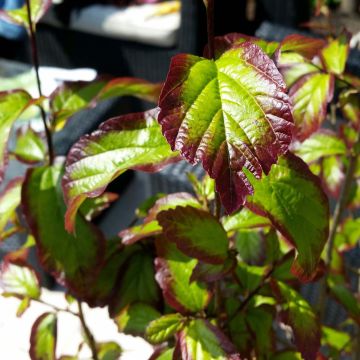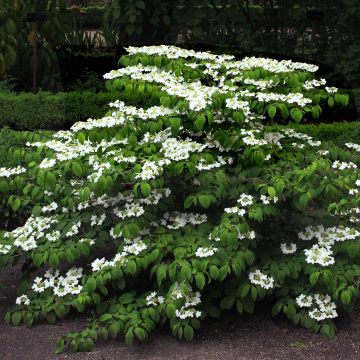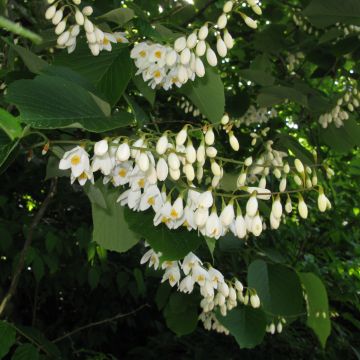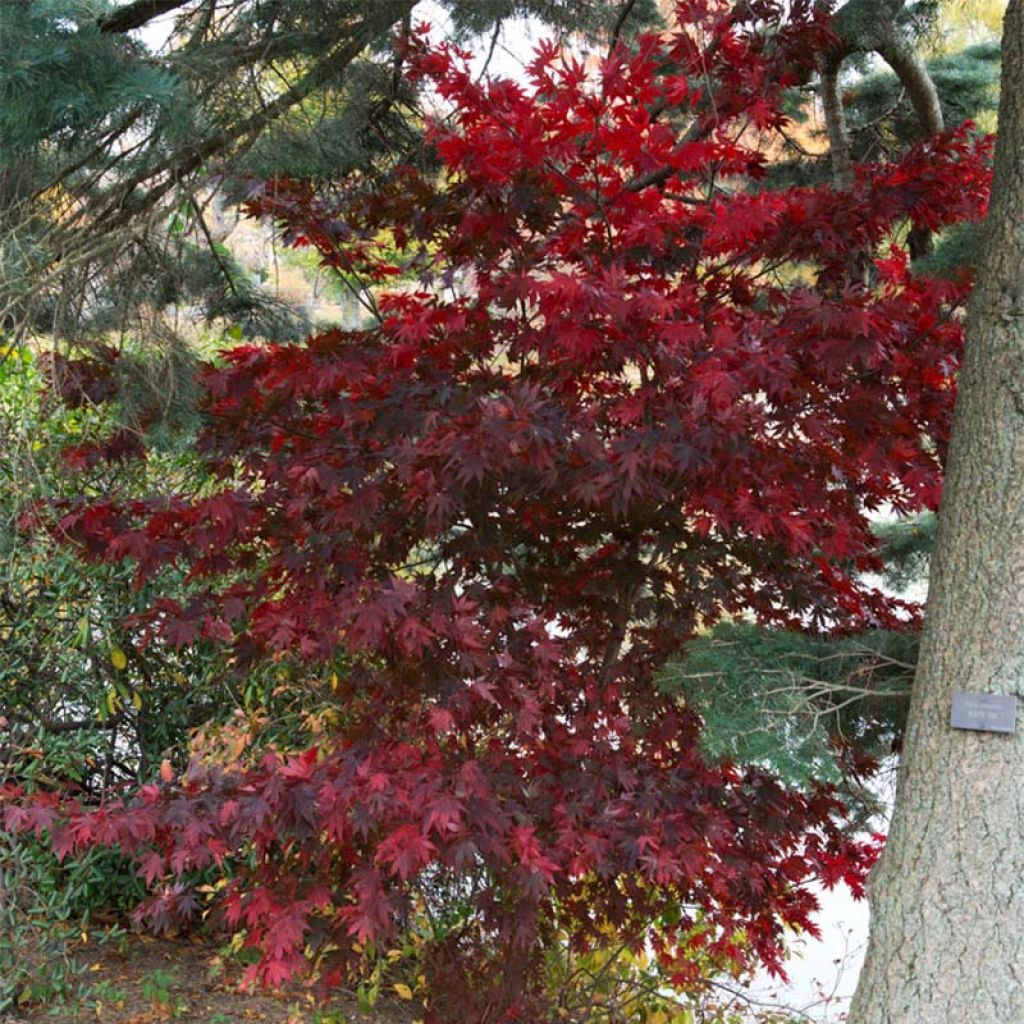

Acer palmatum Bloodgood - Japanese Maple
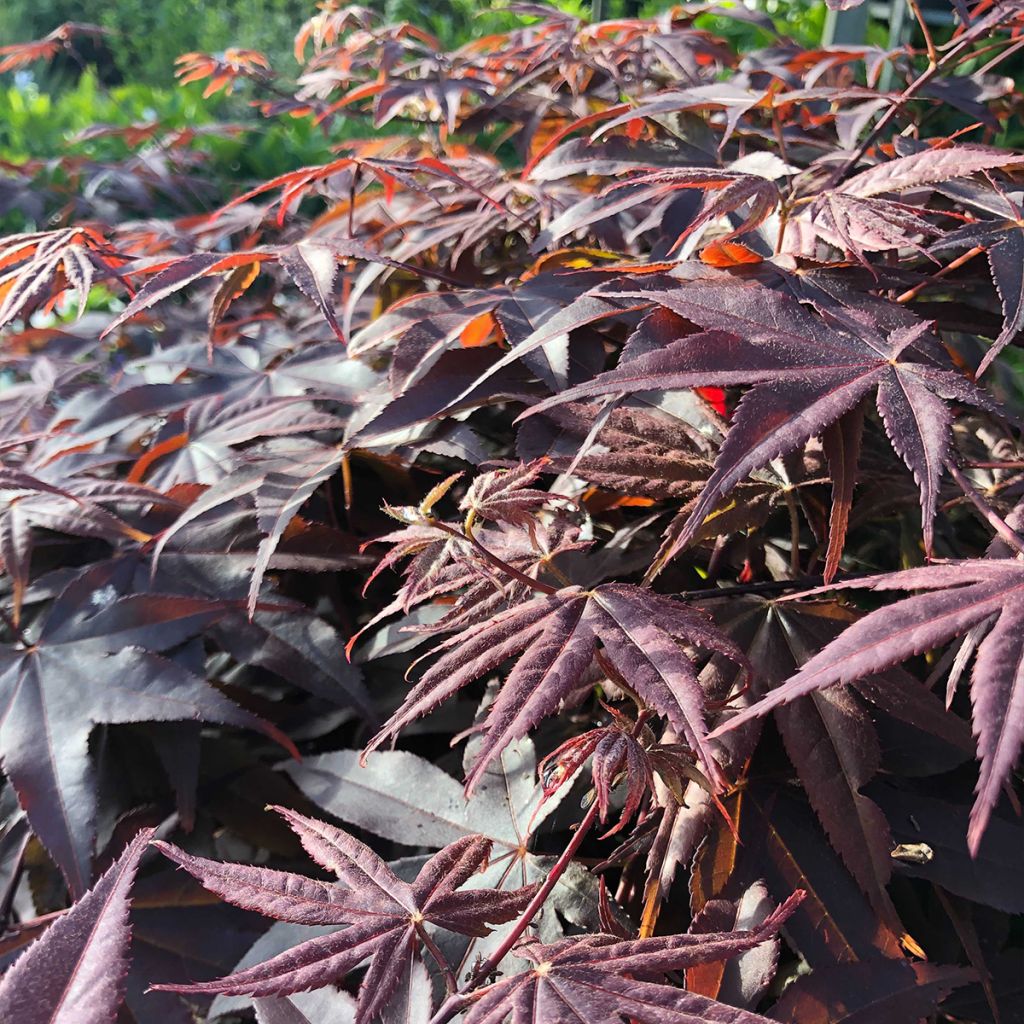

Acer palmatum Bloodgood - Japanese Maple
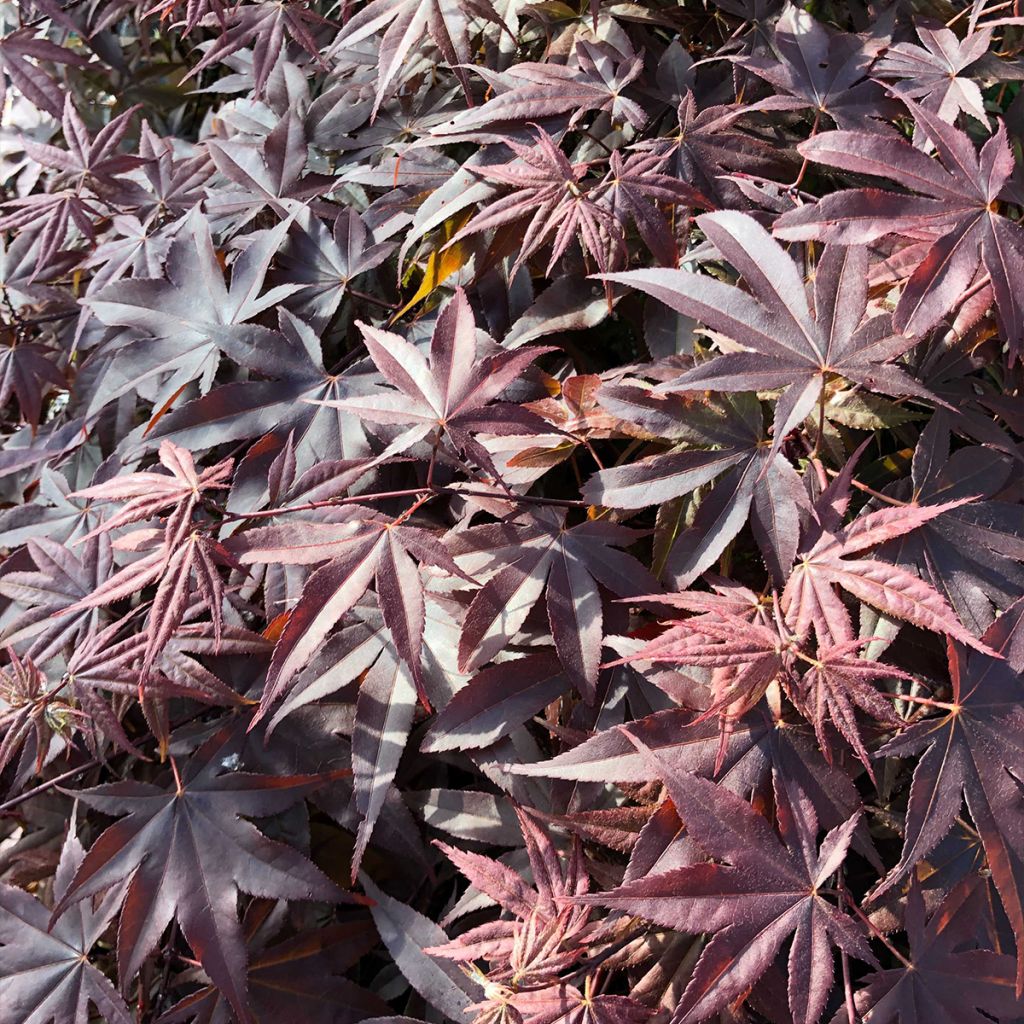

Acer palmatum Bloodgood - Japanese Maple
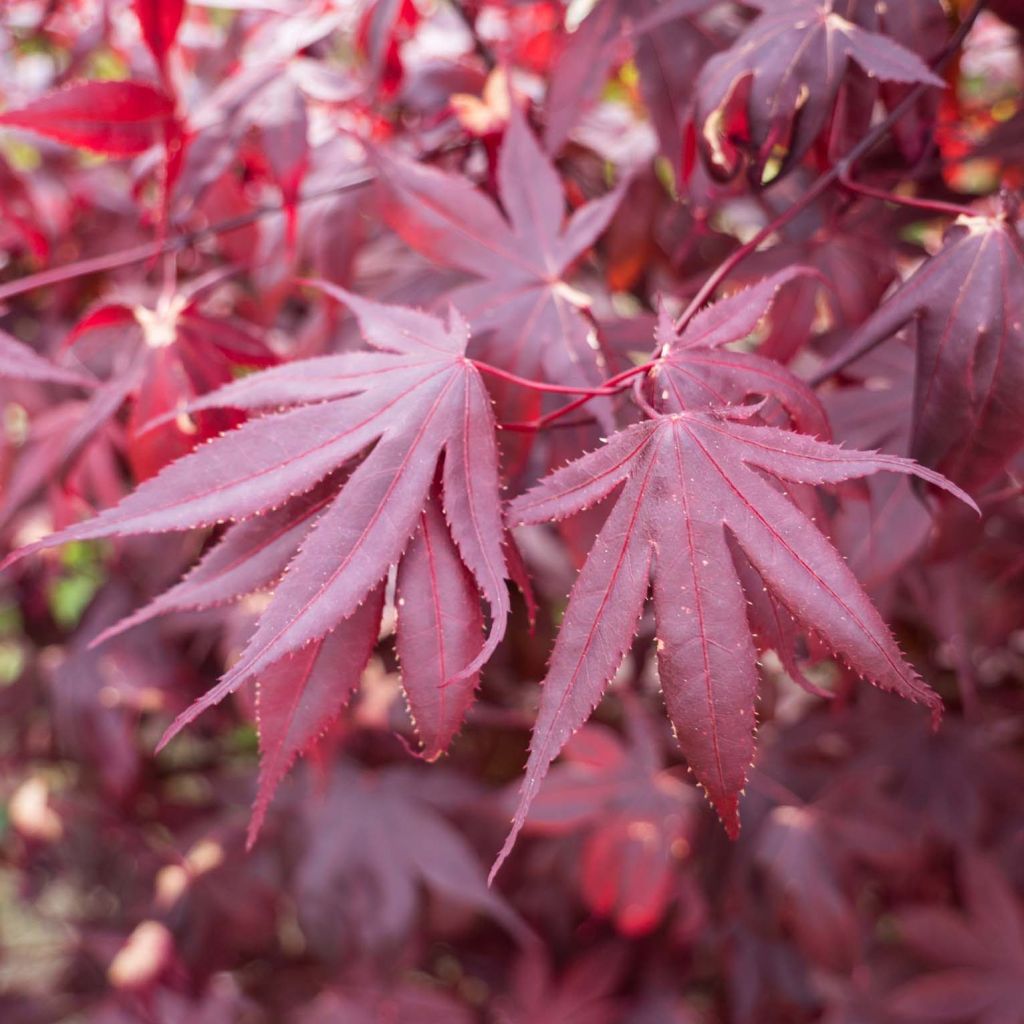

Acer palmatum Bloodgood - Japanese Maple
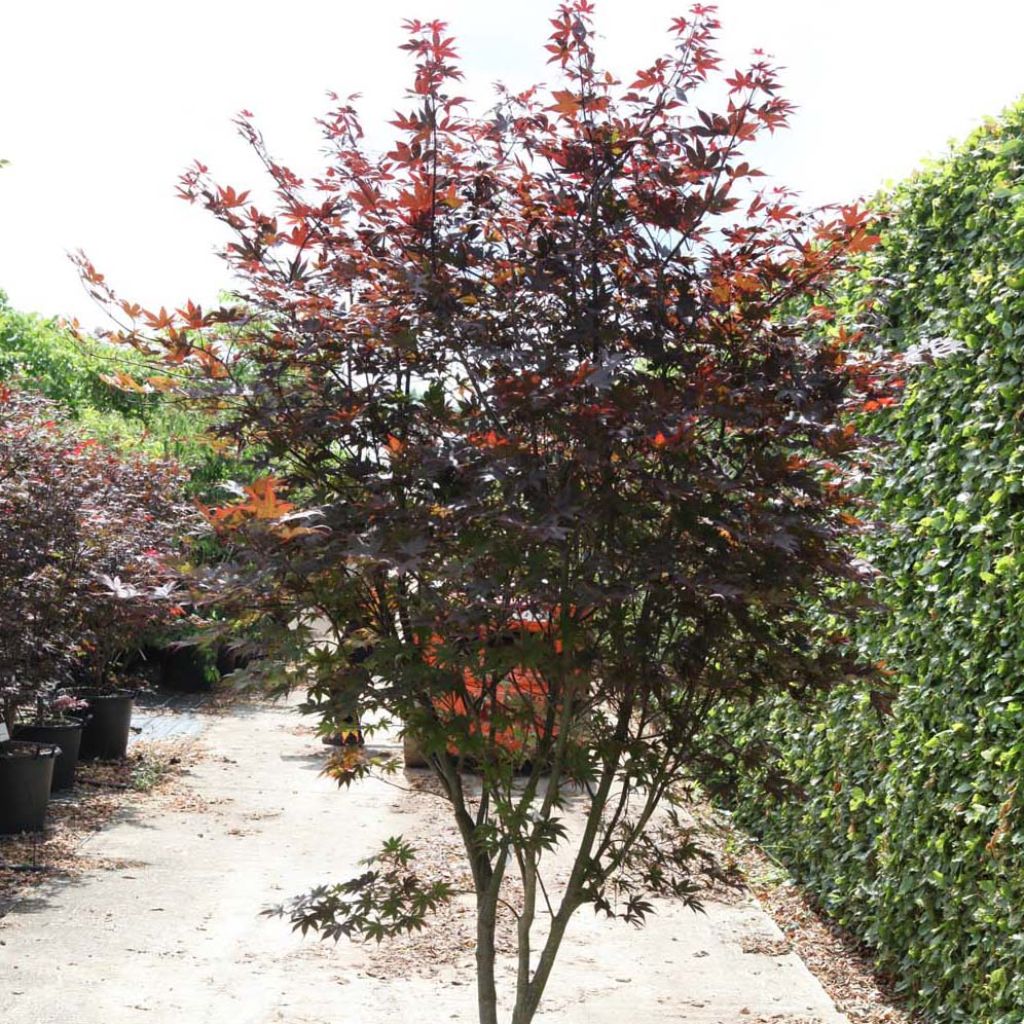

Acer palmatum Bloodgood - Japanese Maple
Acer palmatum Bloodgood - Japanese Maple
Acer palmatum Bloodgood
Japanese Maple, Palmate Maple
This item cannot be shipped to the selected country
Delivery charge from €5.90
Delivery charge from €5.90
Delivery to Corse prohibited
More information
Schedule delivery date,
and select date in basket
This plant carries a 24 months recovery warranty
More information
We guarantee the quality of our plants for a full growing cycle, and will replace at our expense any plant that fails to recover under normal climatic and planting conditions.
From €5.90 for pickup delivery and €6.90 for home delivery
Express home delivery from €8.90.
From €5.90 for pickup delivery and €6.90 for home delivery
Express home delivery from €8.90.
Delivery to Corse prohibited: UE law prohibits the import of this plant from mainland France to Corse as part of the fight against Xylella fastidiosa. Please accept our sincere apologies.
More information
Does this plant fit my garden?
Set up your Plantfit profile →
Description
The Acer palmatum Bloodgood is a remarkably colourful variety of Japanese Maple from spring to autumn. Its lobed foliage changes colour throughout the seasons, without losing intensity. Starting from bright red in spring to purple in summer, it transitions to a range of red and brown shades in autumn before falling. This dazzling small tree is also an elegant plant, resistant to diseases and vigorous under the right conditions. Plant it in partial shade in a heather soil bed or in a large pot, keeping the soil moist. It will become the centrepiece of a small garden or the focal point of a terrace.
Originally from eastern China, Korea, and Japan, Acer palmatum is the origin of a multitude of horticultural varieties that compete in beauty. Japanese Maple, like all maples, belongs to the Aceraceae family. It is relatively hardy but only tolerates light, limestone-free soils. The 'Bloodgood' cultivar, which grows fairly quickly, develops a slightly broad and flat habit over time and reaches about 2 m (6 to 7 ft) in all directions. This small tree has a reddish-brown bark and develops beautiful deciduous leaves, with palmately lobed shapes. The foliage has a glossy texture which constantly changes colour, in various shades of red, without any trace of green. The leaves are opposite, 5 to 10cm (3.9 in) long, divided into 5 to 7 elongated and pointed lobes. The discreet flowering occurs in May-June. The flowers, grouped in small clusters, sometimes produce fruits with curved wings, called samaras, 3 cm (1.2 in) long.
Acer palmatum Bloodgood thrives in preferably acidic, moist, fertile, loose, and well-drained soil, in a partially shaded location sheltered from cold and dry winds. Compact yet sculptural, it is well-suited for small gardens, as well as for decorating terraces, patios, and shaded rockeries. Azaleas, pieris, rhododendrons, wild camellias, and heathers pair beautifully with this compact Acer. It can also be trained into a magnificent flat bonsai. During the end of the season, combining different varieties of Japanese Maples can create a stunning effect due to the variation in colours and leaf structures.
Report an error about the product description
Acer palmatum Bloodgood - Japanese Maple in pictures
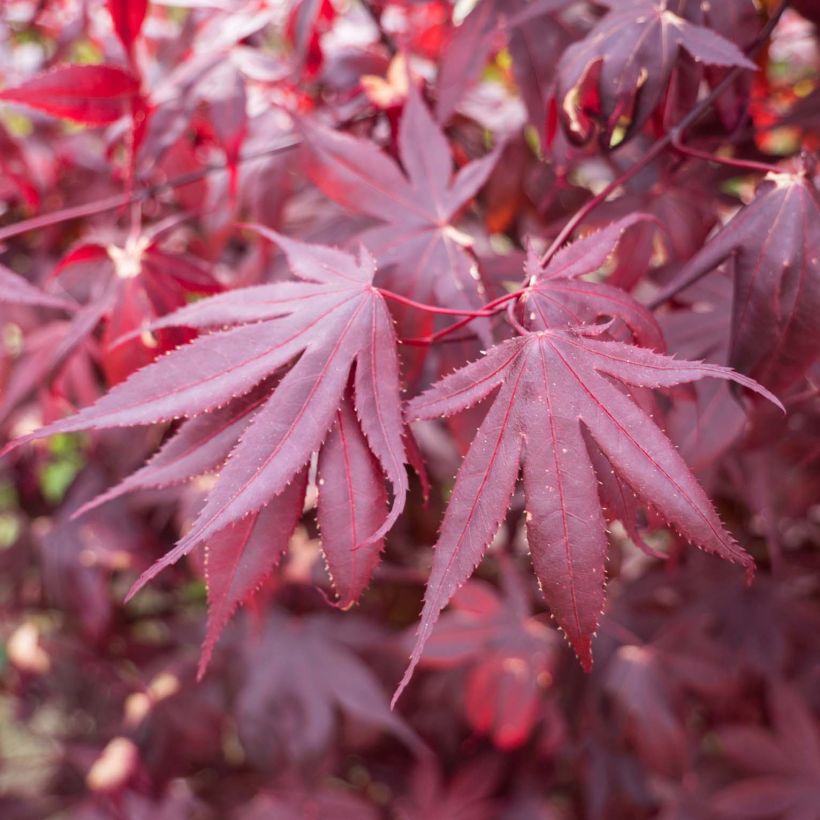

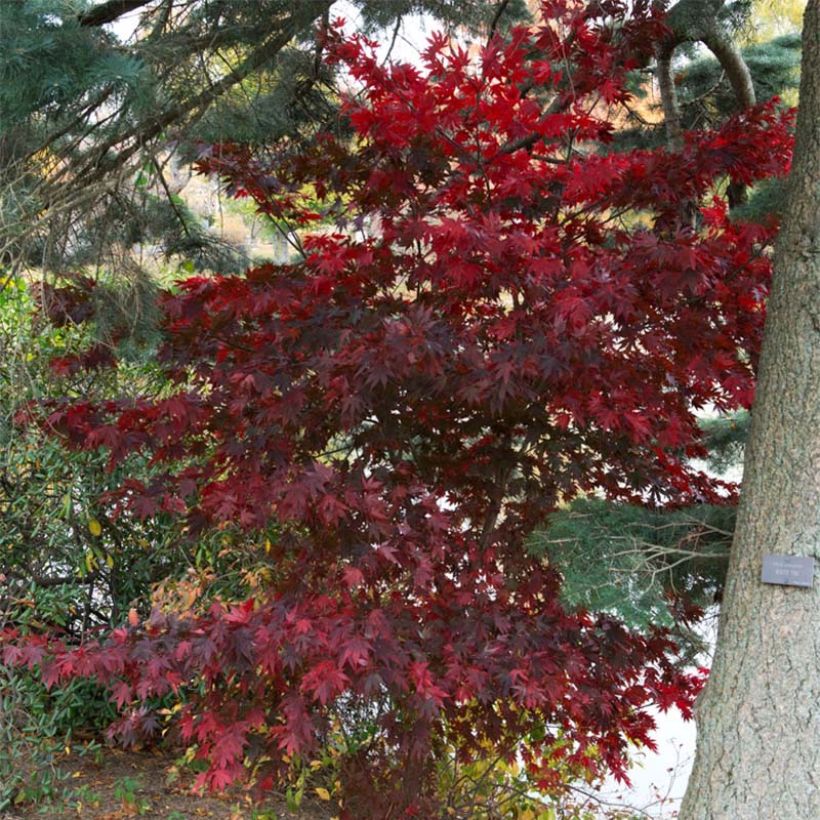

Plant habit
Flowering
Foliage
Botanical data
Acer
palmatum
Bloodgood
Aceraceae
Japanese Maple, Palmate Maple
Cultivar or hybrid
Other Japanese Maples
Planting and care
The Acer palmatum Bloodgood should be planted in spring or autumn in a preferably light, acidic, moist, deep, loose and well-drained soil, in a semi-shaded, even shaded position sheltered from cold and dry winds. The soil should be kept moist by mulching in summer if necessary, but should not be waterlogged in winter. Add a significant amount of organic matter every 3 years to ensure a good humus content in the soil. Mulch, water, and mist the foliage on hot evenings. Winter pruning is limited to balancing the branches. Treat preventively against scale insects and verticillium wilt, a fungal disease that occurs in heavy and overly moist soil.
Planting period
Intended location
Care
-
, onOrder confirmed
Reply from on Promesse de fleurs
Striking foliage shrubs
Haven't found what you were looking for?
Hardiness is the lowest winter temperature a plant can endure without suffering serious damage or even dying. However, hardiness is affected by location (a sheltered area, such as a patio), protection (winter cover) and soil type (hardiness is improved by well-drained soil).

Photo Sharing Terms & Conditions
In order to encourage gardeners to interact and share their experiences, Promesse de fleurs offers various media enabling content to be uploaded onto its Site - in particular via the ‘Photo sharing’ module.
The User agrees to refrain from:
- Posting any content that is illegal, prejudicial, insulting, racist, inciteful to hatred, revisionist, contrary to public decency, that infringes on privacy or on the privacy rights of third parties, in particular the publicity rights of persons and goods, intellectual property rights, or the right to privacy.
- Submitting content on behalf of a third party;
- Impersonate the identity of a third party and/or publish any personal information about a third party;
In general, the User undertakes to refrain from any unethical behaviour.
All Content (in particular text, comments, files, images, photos, videos, creative works, etc.), which may be subject to property or intellectual property rights, image or other private rights, shall remain the property of the User, subject to the limited rights granted by the terms of the licence granted by Promesse de fleurs as stated below. Users are at liberty to publish or not to publish such Content on the Site, notably via the ‘Photo Sharing’ facility, and accept that this Content shall be made public and freely accessible, notably on the Internet.
Users further acknowledge, undertake to have ,and guarantee that they hold all necessary rights and permissions to publish such material on the Site, in particular with regard to the legislation in force pertaining to any privacy, property, intellectual property, image, or contractual rights, or rights of any other nature. By publishing such Content on the Site, Users acknowledge accepting full liability as publishers of the Content within the meaning of the law, and grant Promesse de fleurs, free of charge, an inclusive, worldwide licence for the said Content for the entire duration of its publication, including all reproduction, representation, up/downloading, displaying, performing, transmission, and storage rights.
Users also grant permission for their name to be linked to the Content and accept that this link may not always be made available.
By engaging in posting material, Users consent to their Content becoming automatically accessible on the Internet, in particular on other sites and/or blogs and/or web pages of the Promesse de fleurs site, including in particular social pages and the Promesse de fleurs catalogue.
Users may secure the removal of entrusted content free of charge by issuing a simple request via our contact form.
The flowering period indicated on our website applies to countries and regions located in USDA zone 8 (France, the United Kingdom, Ireland, the Netherlands, etc.)
It will vary according to where you live:
- In zones 9 to 10 (Italy, Spain, Greece, etc.), flowering will occur about 2 to 4 weeks earlier.
- In zones 6 to 7 (Germany, Poland, Slovenia, and lower mountainous regions), flowering will be delayed by 2 to 3 weeks.
- In zone 5 (Central Europe, Scandinavia), blooming will be delayed by 3 to 5 weeks.
In temperate climates, pruning of spring-flowering shrubs (forsythia, spireas, etc.) should be done just after flowering.
Pruning of summer-flowering shrubs (Indian Lilac, Perovskia, etc.) can be done in winter or spring.
In cold regions as well as with frost-sensitive plants, avoid pruning too early when severe frosts may still occur.
The planting period indicated on our website applies to countries and regions located in USDA zone 8 (France, United Kingdom, Ireland, Netherlands).
It will vary according to where you live:
- In Mediterranean zones (Marseille, Madrid, Milan, etc.), autumn and winter are the best planting periods.
- In continental zones (Strasbourg, Munich, Vienna, etc.), delay planting by 2 to 3 weeks in spring and bring it forward by 2 to 4 weeks in autumn.
- In mountainous regions (the Alps, Pyrenees, Carpathians, etc.), it is best to plant in late spring (May-June) or late summer (August-September).
The harvesting period indicated on our website applies to countries and regions in USDA zone 8 (France, England, Ireland, the Netherlands).
In colder areas (Scandinavia, Poland, Austria...) fruit and vegetable harvests are likely to be delayed by 3-4 weeks.
In warmer areas (Italy, Spain, Greece, etc.), harvesting will probably take place earlier, depending on weather conditions.
The sowing periods indicated on our website apply to countries and regions within USDA Zone 8 (France, UK, Ireland, Netherlands).
In colder areas (Scandinavia, Poland, Austria...), delay any outdoor sowing by 3-4 weeks, or sow under glass.
In warmer climes (Italy, Spain, Greece, etc.), bring outdoor sowing forward by a few weeks.

































